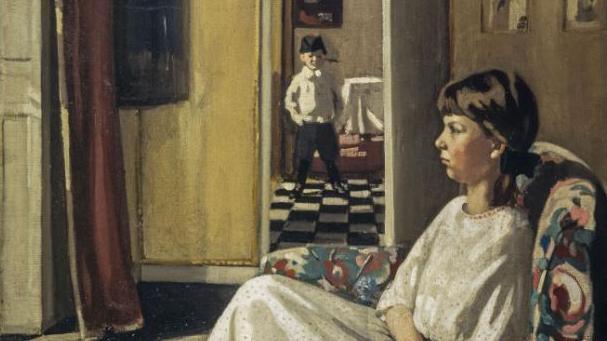Church project shines light on World War Two artist

Rosemary Rutherford trained in London and at Chelmsford School of Art
- Published
A church restoration project has been shining a light on a World War Two war artist who recorded life on the home front as well as the war abroad.
Rosemary Rutherford spent much of her life in Broomfield, near Chelmsford, and become a leading post-war stained glass art designer, creating 40 windows.
Her paintings of child evacuees "have great humanity in them and you really sense their sense of displacement", said Dr Catherine Pearson, one of the researchers on the village's Project Rutherford, external.
"All her life she kept updating her skills and mastering new techniques – she represents so many areas."
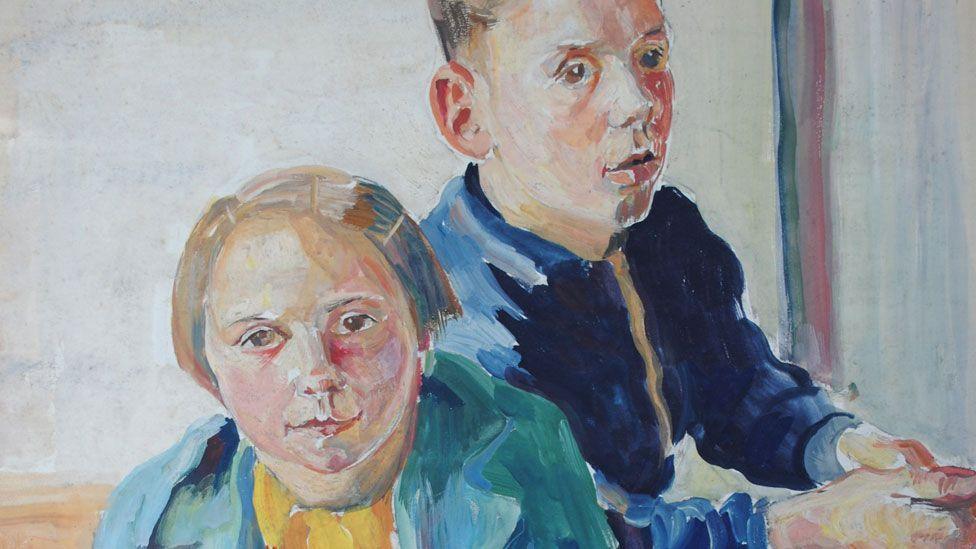
Rosemary Rutherford painted evacuee children, including this anxious pair, who are "obviously trying to adjust to this new life", said Catherine Pearson
Dr Pearson added: "She knew Essex very well and was very inspired by the landscape here, and the people I've met who knew her say she was a very joyful person."
The village hosted 180 wartime evacuees from a school in Tottenham, London, and Miss Rutherford and her vicar father helped settle them in, while she also painted some of them.
The Rutherford Project is trying to put names to the children depicted, said historian Dr Pearson, who grew up in Broomfield and works for Anglia Ruskin University's research and innovation department.
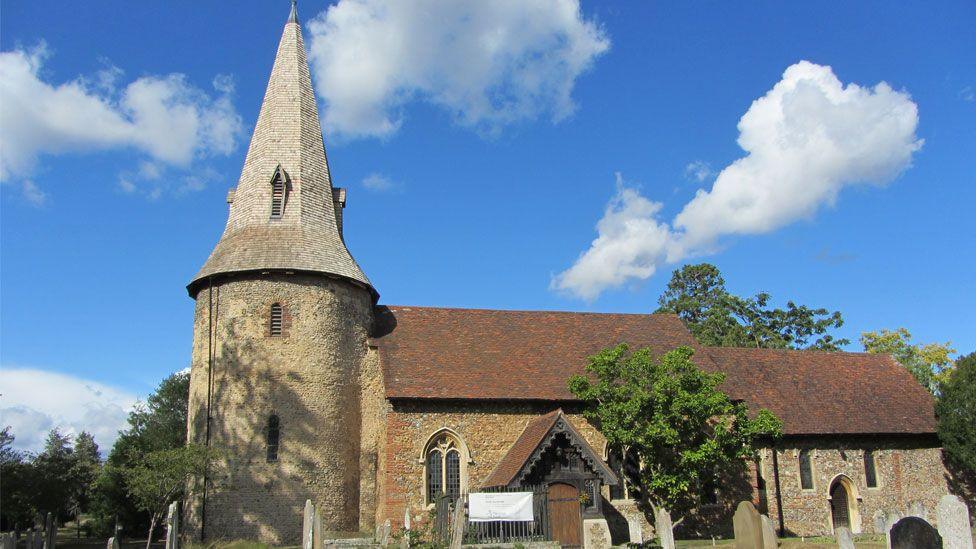
Part of the restoration project at St Mary and St Leonard's Church included research into Rosemary Rutherford's career
Miss Rutherford received permits from the War Artist Advisory Committee , externalto paint wartime subjects, although she was never one of its salaried artists.
"She applied to look at motor torpedo boat-building on the East Coast, and at the time she was driving a mobile canteen around the coast, so there was an opportunity to record that, too," said Dr Pearson.
Later, she trained with the British Red Cross Voluntary Aid Detachments and was able to draw her fellow nurses and patients.
Dr Pearson said: "What's very important about her as a woman war artist is she not only recorded life on the home front but also abroad, because she was posted in 1944 to Sri Lanka to nurse sailors injured in the Far East campaign."
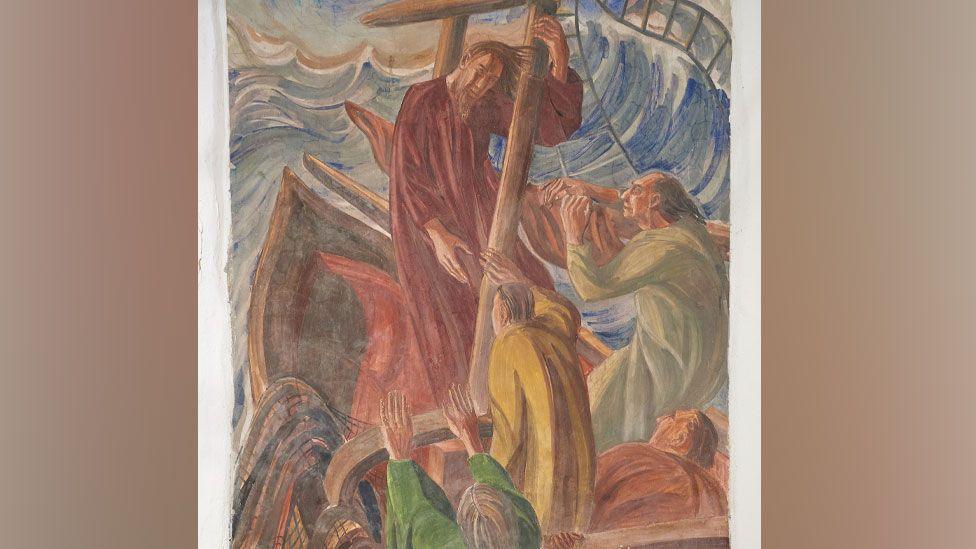
The wartime fresco of Christ stilling the storm, in the church belfry, was painted at a time when Britain's wartime fortunes looked bleak
Miss Rutherford, who was born in 1912, moved to Broomfield after her father became the vicar of St Mary with St Leonard's Church in 1929, and she stayed there until 1959.
The parish church includes a fresco of Christ stilling the storm which she painted in 1942.
When the church's 12th Century tower and its 15th Century spire became in desperate need of repairs, the fresco, which was in the belfry, was put at risk.
Grants, including one from the National Lottery Heritage Fund, helped fund the repairs and the research project into the artist.
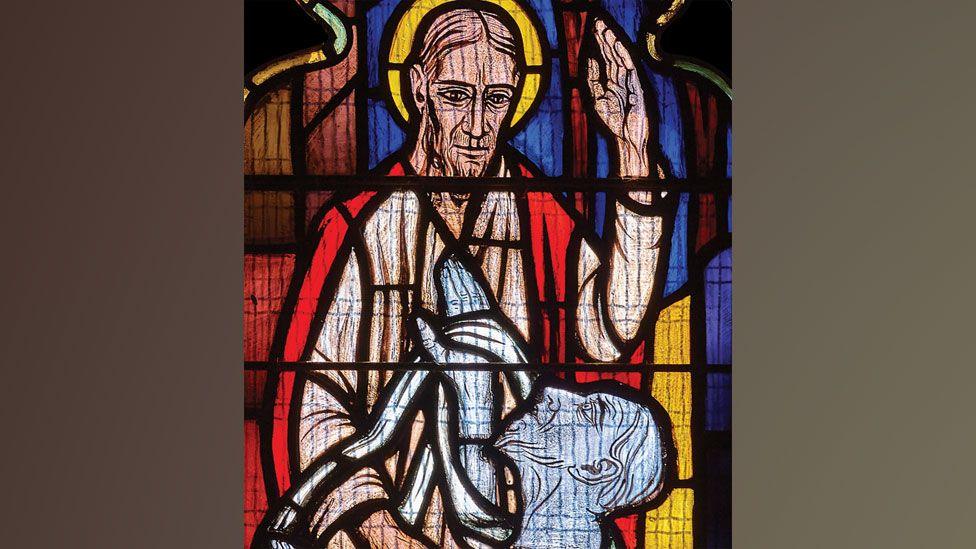
Four of her earliest stained glass designs are in Broomfield, replacing windows destroyed in the war
Miss Rutherford retrained as a stained glass designer in the late 1940s, in between helping her widowed brother bring up his daughter and caring for her mother.
Broomfield has four of her windows, which are replacements for those destroyed in a wartime bomb blast.
She would go on to create 40 designs in all, including the vast east window at St Paul's, Clacton-on-Sea. She died in 1972.
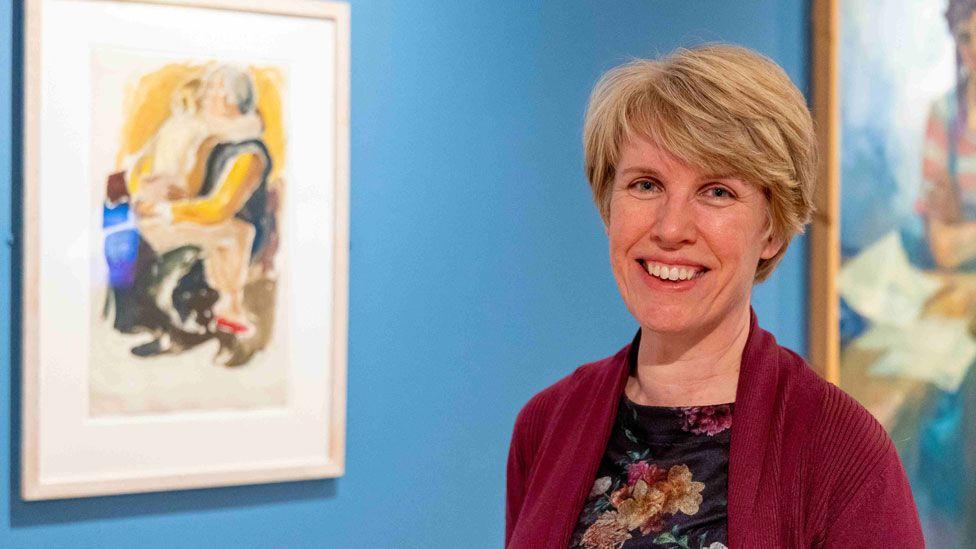
Catherine Pearson, with Rosemary Rutherford's painting of an adult hugging a child evacuee, at the Museum of Chelmsford
Dr Pearson said: "After her death, her brother campaigned on her behalf and he managed to get her [war] work into the Imperial War Museum, the National Maritime Museum and the Museum of Chelmsford.
"In fact, one of her evacuee pieces of a child being hugged by an adult is currently on show at Chelmsford museum's current exhibition, external – and you can just see the emotion and connection in that painting."
Dr Pearson will be giving a talk about Rosemary Rutherford, external at the Museum of Chelmsford, as part of the Essex Book Festival, at 14:00 BST on Saturday.
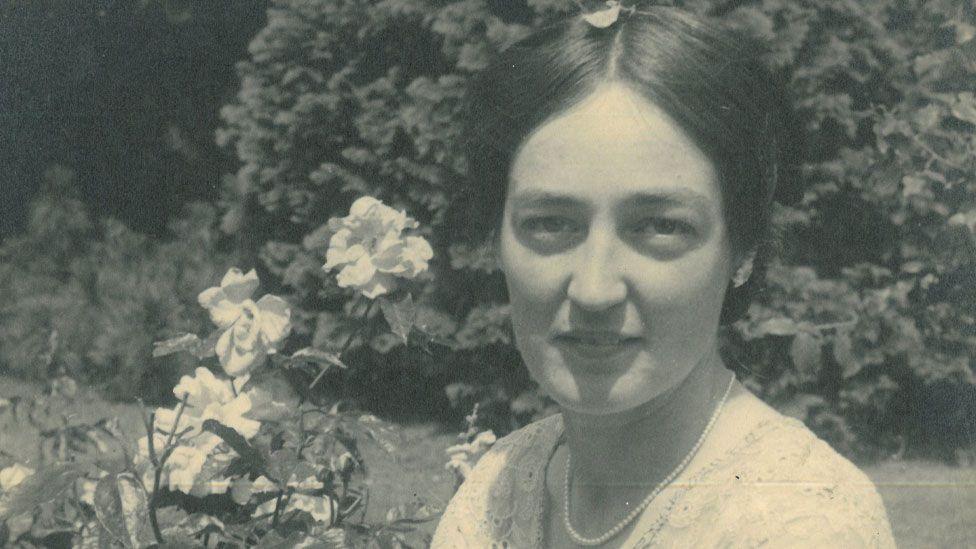
Rosemary Rutherford later learned a stained glass technique called "dalle de verre", which uses cement joints instead of lead
Get in touch
Do you have a story suggestion for Essex?
Follow Essex news on BBC Sounds, Facebook, external, Instagram, external and X, external.
Related topics
Related stories
- Published18 May
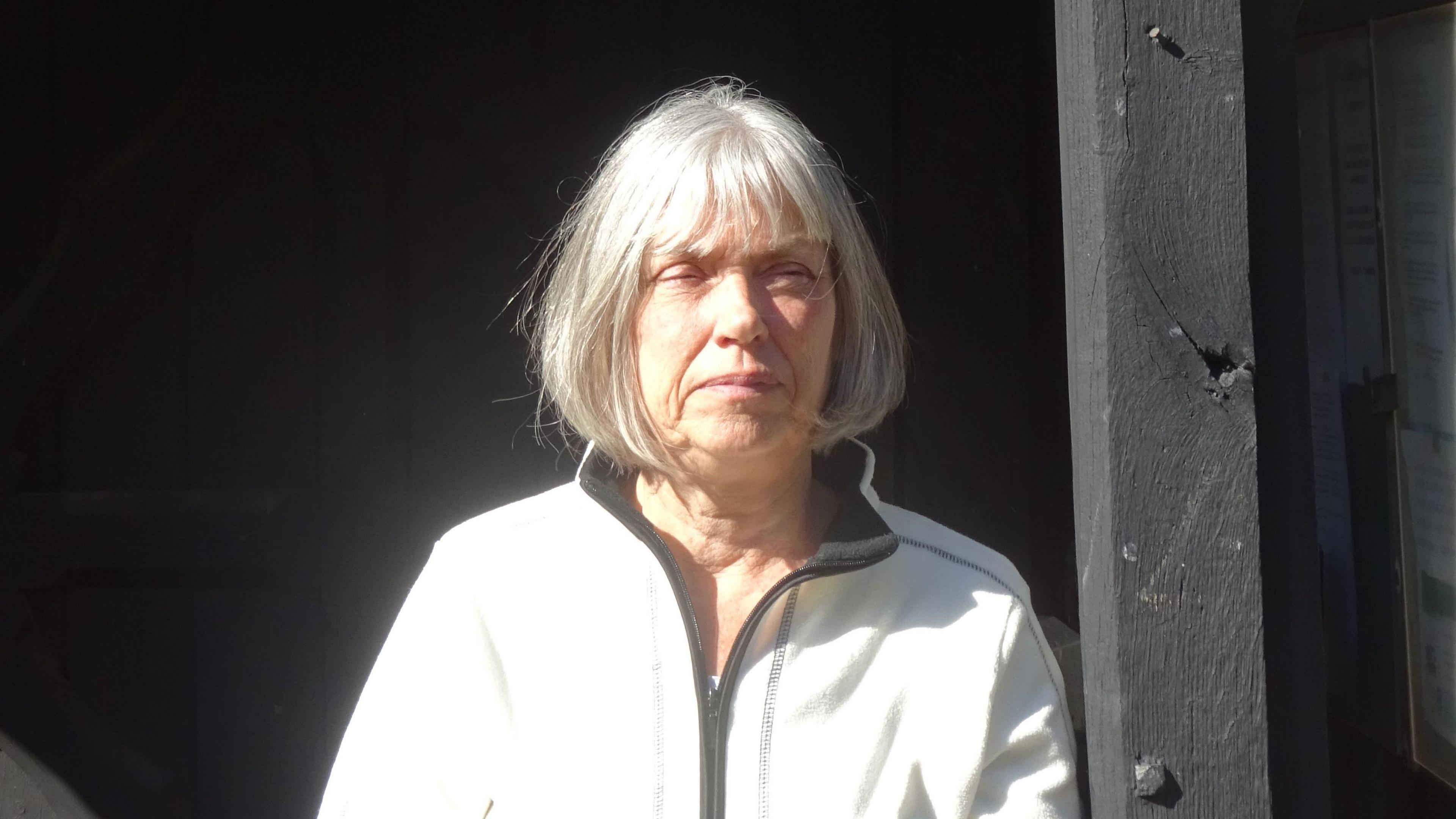
- Published20 April
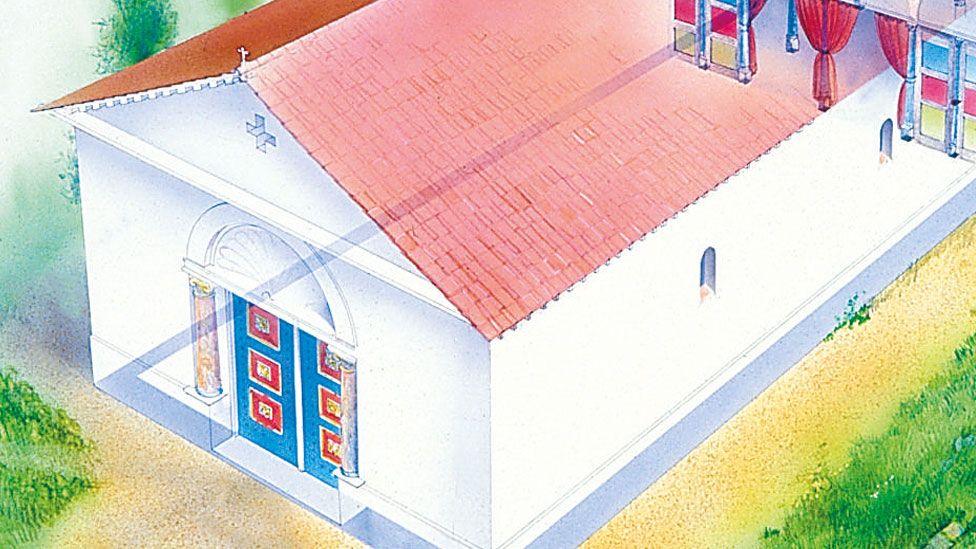
- Published18 July 2024
